Macrobrachium rosenbergii is the largest and therefore frequently bred large-armed shrimp in aquaculture for food purposes. We have this impressive species more or less regularly in our program for specialists and show aquariums. For the biology and pictures of this species, see https://www.aquariumglaser.de/en/31-crayfishes-shrimps-crabs-snails-mussels/macrobrachium-rosenbergii-3/
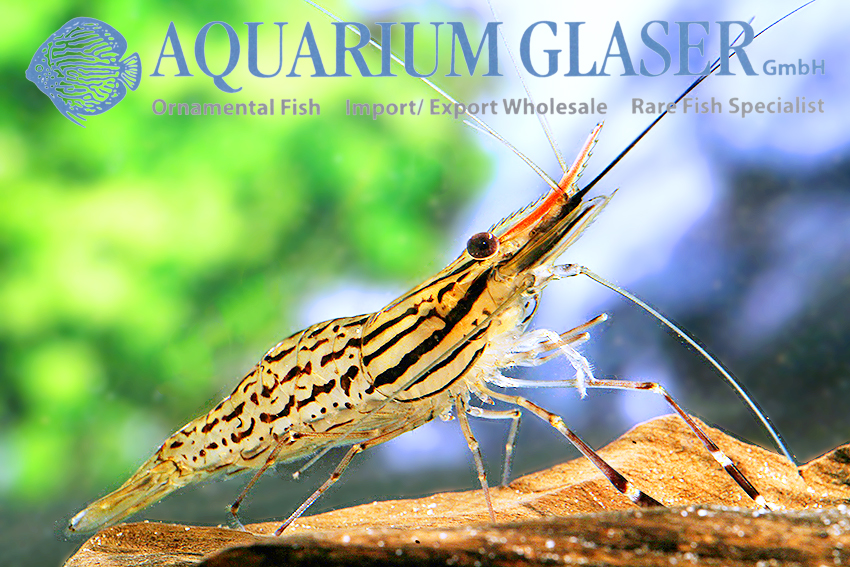
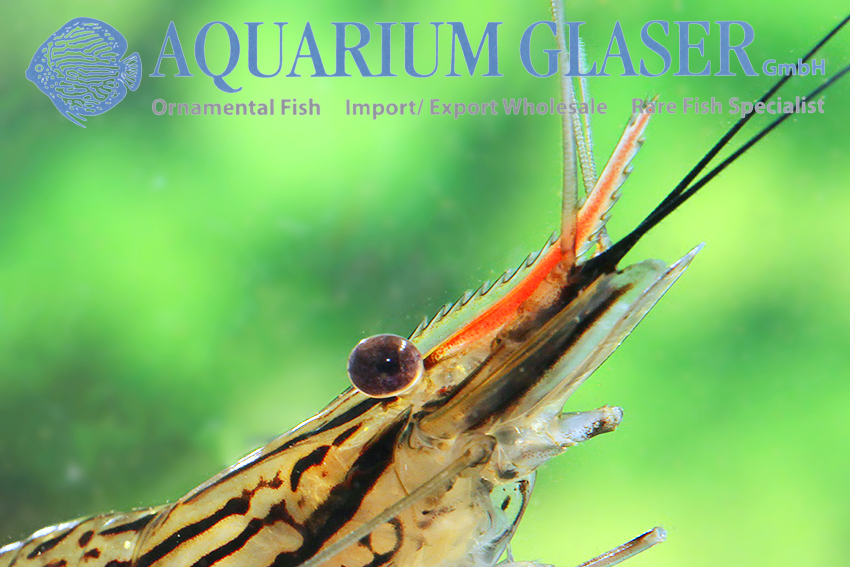
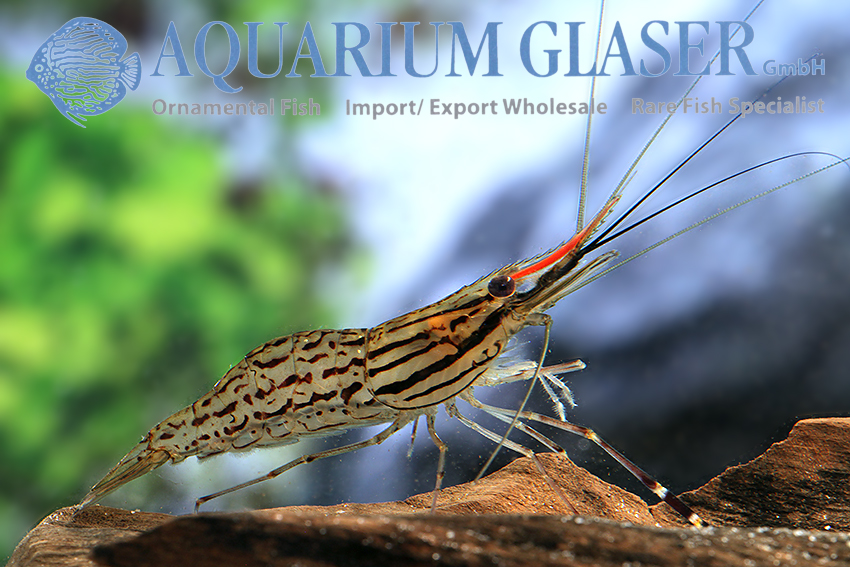
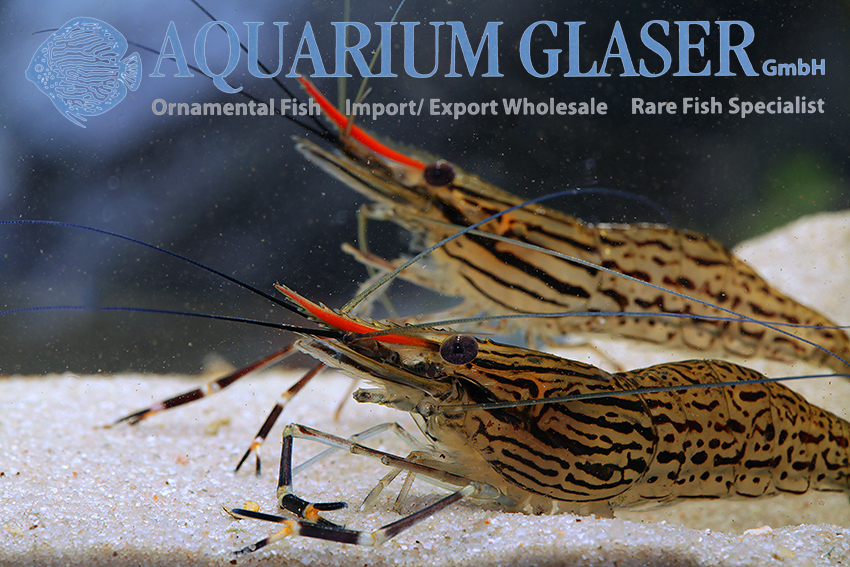
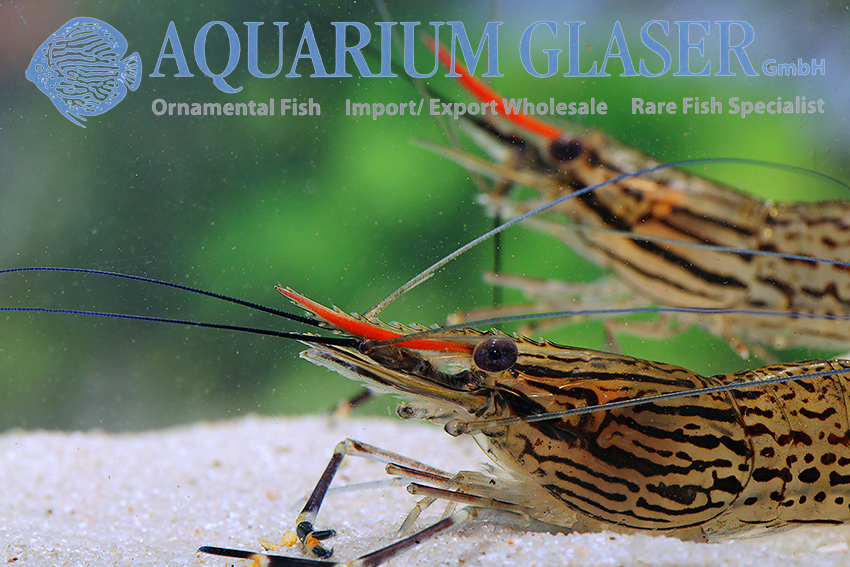
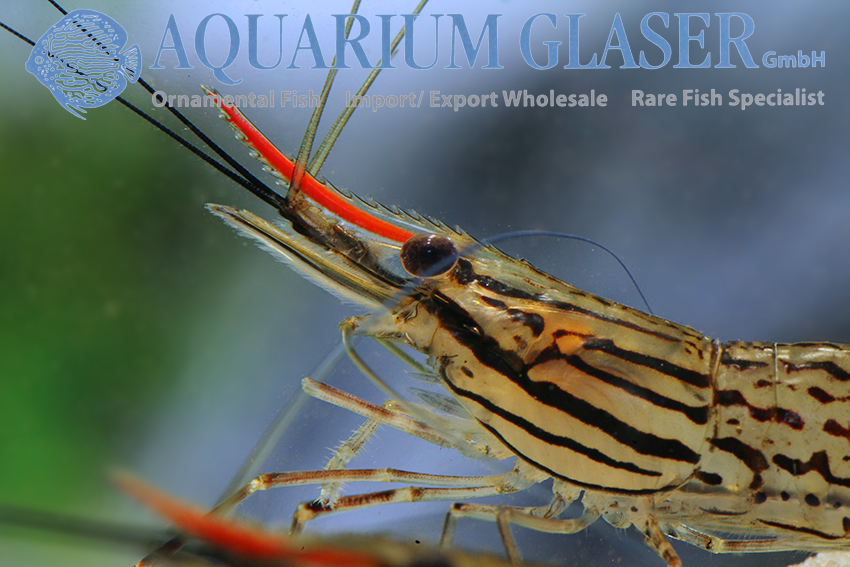
M. spinipes is closely related to M. rosenbergii and has often been confused with it in the past (for the complex name history of the two species, see Shy, Wowor & Ng, 2013). It grows to the same size and reaches a weight of over one kilogram. The natural distribution ranges from Australia to the Philippines. This species has also been in aquaculture in Taiwan, for example, since the 1980s, but for a long time it was not distinguished from M. rosenbergii, although the two species were given different popular names, because breeders, fishermen and traders were well aware of the differences. In 2013, Shy, Wowor and Ng cleared up the confusion.
Larger specimens (over 5 cm carapax length; the carapax is the head shield in crabs and shrimps) of M. rosenbergii and M. spinipes look very similar. Both are gray-blue in color, M. spinipes has fine yellowish lines on the carapace, which are missing in M. rosenbergii. The easiest way to distinguish between the two species is by the color of the inner antennae, which are bright blue in M. spinipes and reddish or whitish in M. rosenbergii.
But the juveniles of M. spinipes are spectacularly differently colored, with longitudinal stripes all over the body and a bright red rostrum. We can occasionally import such specimens from Taiwan. They are undoubtedly very desirable, but one must not forget in the initial rapture how large they grow. In addition, large Macrobrachium are real predators that can hardly be kept together with small fish (unless the fish are to be used as food). M. spinipes are also very quarrelsome among themselves. They are best kept individually, otherwise limb losses are inevitable.
The larvae of M. spinipes develop in the sea, just like those of M. rosenbergii, while the adults are pure freshwater inhabitants. The larvae are successfully reared using Artemia nauplii as food. Under aquarium conditions, however, they are unlikely to be bred and reared as they take up a lot of space.
For our customers: the animals have code 485002 on our stock list. Please note that we only supply the wholesale trade.
Literature:
Shy, J.-Y., Wowor, D. & P. K. L. Ng (2013): A new record of the giant freshwater prawn, Macrobrachium spinipes (Schenkel, 1902) (Crustacea: Decapoda: Palaemonidae) from Taiwan, with notes on its taxonomy. Zootaxa 3734 (1): 045-055
Text & photos: Frank Schäfer




